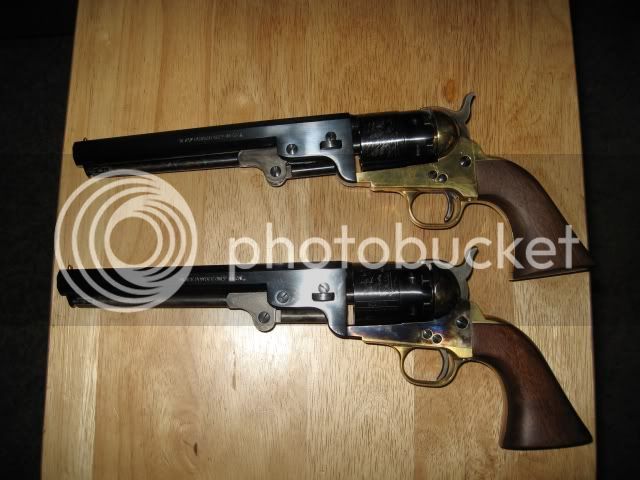On a percussion revolver you will normally get the best accuracy if the ball is seated just below the end of the cylinder- In other words you don't want the ball way down into the cylinder where it has to travel a bit before going into the barrel. Now, on any black powder gun you MUST seat the ball without any dead air space between the powder and the ball. The nature of black powder is such that you could blow up or damage the gun if there is any dead air space.
Now some folks like a light powder charge for target practice- say 10-12 grains. When that small a charge of powder is used the normal thing to do is add some filler over the powder for the sole purpose of taking up space in the chamber so that the ball is closer to the end of the cylinder. Cream of Wheat cereal is a very common filler. Once again the ball must be seated firmly. The sequence is powder, cream of wheat, the ball- the ball being rammed down until you feel it firmly seated.
After the ball is seated the normal practice is to cover the ends of the chambers with some form of grease- a lot of folks use Crisco shortening. Next cap the nipples and you are ready to fire the gun.
If you use more powder- say 20-22 grains, then the ball is close enough to the end of the chamber that the Cream of Wheat filler is omitted. In this case you put in the powder, then the ball- seat it firmly, then fill the chamber ends with Crisco, then cap the nipples.
A lot of folks get tired of messing with Crisco- greasy fingers, etc. Instead of the Crisco you can use wads- home made or store bought. Lubed, store bought wads would be best to start. The wads are pretty thick and take up a fair amount of room in the chamber so if you use wads the powder charge ought to be around 18 grains ( all these charges are assuming the gun is 36 caliber). In this case you put in the powder charge, then the pre-lubed wad, then the ball, ramming the ball down until it seats firmly. No Crisco is needed, just cap the nipple and you are good to go.








